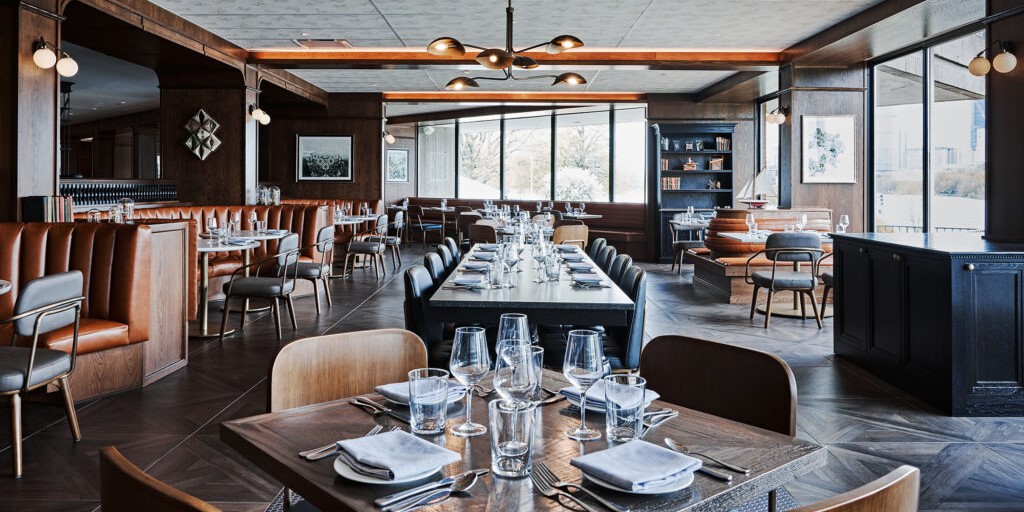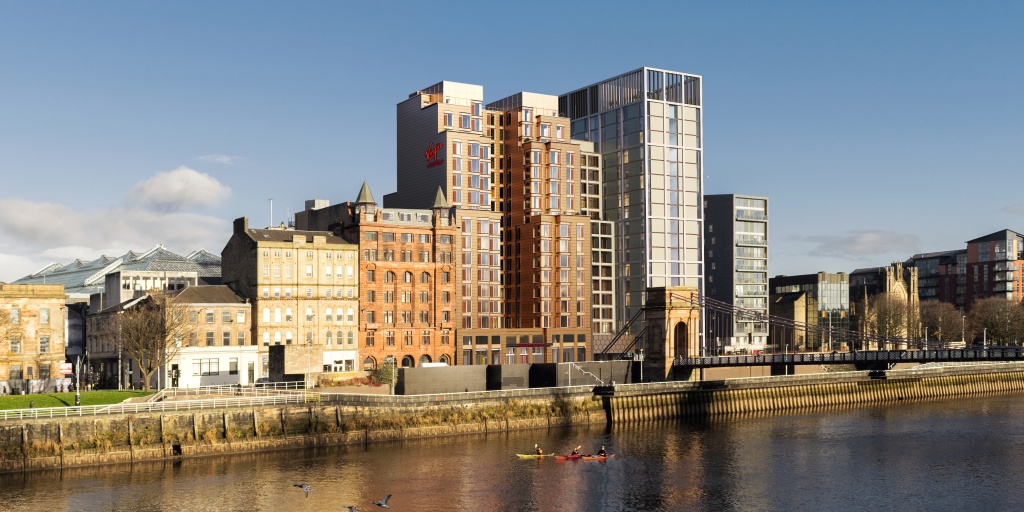Jestico + Whiles’ director talks exclusively to our editor-in-chief Richard Frost about his career in hotel design and the concept behind the extraordinary W Edinburgh.
Founded by Tom Jestico and John Whiles in 1977, employee-owned architecture and interior design practice Jestico + Whiles now has more than 100 staff across offices in London and Prague. Here, director James Dilley, head of hospitality and interior design, discusses his own role, handling projects for the likes of W Hotels and Mandarin Oriental, and how roof spaces have become highly prized in the post-Covid world.
Can you tell me about your role within Jestico + Whiles?
I have an overview of all our projects – the ones we have and the ones we’re expecting to win. It’s really about defining the direction of the studio. We’re quite unusual because we blend architecture and materials, which over the years has been quite confusing for some operators as they want an architect and an interior designer, but we’re in the business of trying to provide holistic guest experiences.
On W Edinburgh, for example, we’re doing the interiors and architecture, and it’d be difficult for somebody to do the interiors in isolation because it’s very much part of the architecture. The architecture defines it.
What’s the vision behind W Edinburgh?
W Edinburgh isn’t open yet but it’s going to be quite a powerful presence on the skyline. This is about recognising what Edinburgh is now, which is effectively the world’s preeminent festival city.
There are three buildings in total – a listed terrace going back to 1776, a newbuild and a spiral part – and it’s a very difficult journey between those three. The central building, the spiral ribbon building if you like, is upside down so all of the F&B’s at the top. This means you’ve got a slightly unusual journey in that you come in at ground level and go up to the top to enjoy the public spaces because that’s where the amazing views are.
So by doing the interiors, you can really define that journey as part of the architecture, but also tackle things as an interior architect. It’s not a matter of coming in and decorating a space that somebody else has designed – you’re creating those internal spaces and manipulating the light yourself.
What other hotel projects have you been working on lately?
We recently launched Kempinski Palace Engelberg, which is a really interesting building. It’s partly the reuse of an existing historic building and partly a newbuild extension, with us doing the interiors. It’s a really good Alpine retreat destination with great views of the snow-capped peaks. It opened in July and is doing very well.
In addition, we’re working on Mandarin Oriental Palace, Luzern, also in Switzerland, which is an amazing palace building with views across Lake Lucerne. Another heritage building that’ll be fantastic.
What effect has the pandemic had on hotel design?
One of the interesting things is the growth in outside spaces. People want roof terraces and gardens – and hotels need to be able to operate these 12 months a year.
New hotels need them and existing hotels are desperately trying to find them. There’s some really innovative work going on to create bars and lookout points by releasing roof spaces that might just have held plant before.
How has hotel design evolved since you joined Jestico + Whiles in 1994?
I think one of the main things is that the definition of luxury has changed. When I started, it was a matter of ticking boxes in terms of providing facilities, but now these generic facilities might not even exist.
We worked on a sustainable resort development (Zuri Zanzibar) a couple of years ago. Because of the nature of the location and the challenges around energy and water, plus the community obligations that we set ourselves, the guests had a different perception of luxury. Now, asking a guest to go with the head gardener or spa director into the garden to pick something for their treatment in the spa is an added experience – 20 years ago, it would’ve been unusual.
Actually, I think human contact between the hotel and guests is becoming a sign of luxury. I checked into a hotel last night and it was all done remotely on a keypad, which was fine and I was expecting it. I got there late on a Sunday and didn’t necessarily need a big conversation. But if I stay at a higher end hotel, I want to have ten minutes with somebody checking me in and talking about how my trip was, what’s the weather like, and what’s going on in town tomorrow.
How do you choose which hotel suppliers to specify?
It’s mostly about the pre-care and aftercare. We’re lucky enough in the UK and Europe to have a choice of high-quality materials and manufactured goods, and so there may be very little between one tap and another in terms of design and quality. But we gravitate towards the people that give us pre-care – helping us with specifying it, looking after us and being attentive – and aftercare – where they’ll immediately sort it out if something does go wrong.
The same goes with furniture, carpets, flooring and everything else. Fundamentally, it’s about the relationships you build based on trust, competence and helping.
What do you most enjoy about designing hotels?
I like dropping into a place that I know very little about and getting under the skin of it to really understand the context, culture, geography and weather.
And normally with these kinds of projects, there’s a person or group of people who are just as interesting as their location. People who’ve been successful in another business, who want to work in hotels, and who have a great story. I just enjoy meeting these unusual people that you wouldn’t meet in other industries.
So I want to work in more places that I haven’t been before. You get to know a place and carry it with you, but then move onto the next one and the next – it’s fascinating. I’m quite blessed to have had this career path.
What would be your advice to the next generation of hotel designers?
At the moment, many typologies and genres are taking their cue from hospitality – workplace, residential, retail and so on. A lot of people are coming to us to design these because we’ve designed hotels, restaurants and hospitality spaces in the past.
For people coming into the industry, they shouldn’t just look at hotels to learn. They should look at how people live and travel, and bring their own life experiences.
Related Articles

Jestico + Whiles is an award-winning international architecture and interior design practice with offices in London and Prague. At the forefront of innovation and design excellence, the practice has won over 150 national and international awards.
[showlayout id=510774]
Error, group does not exist! Check your syntax! (ID: 3)






